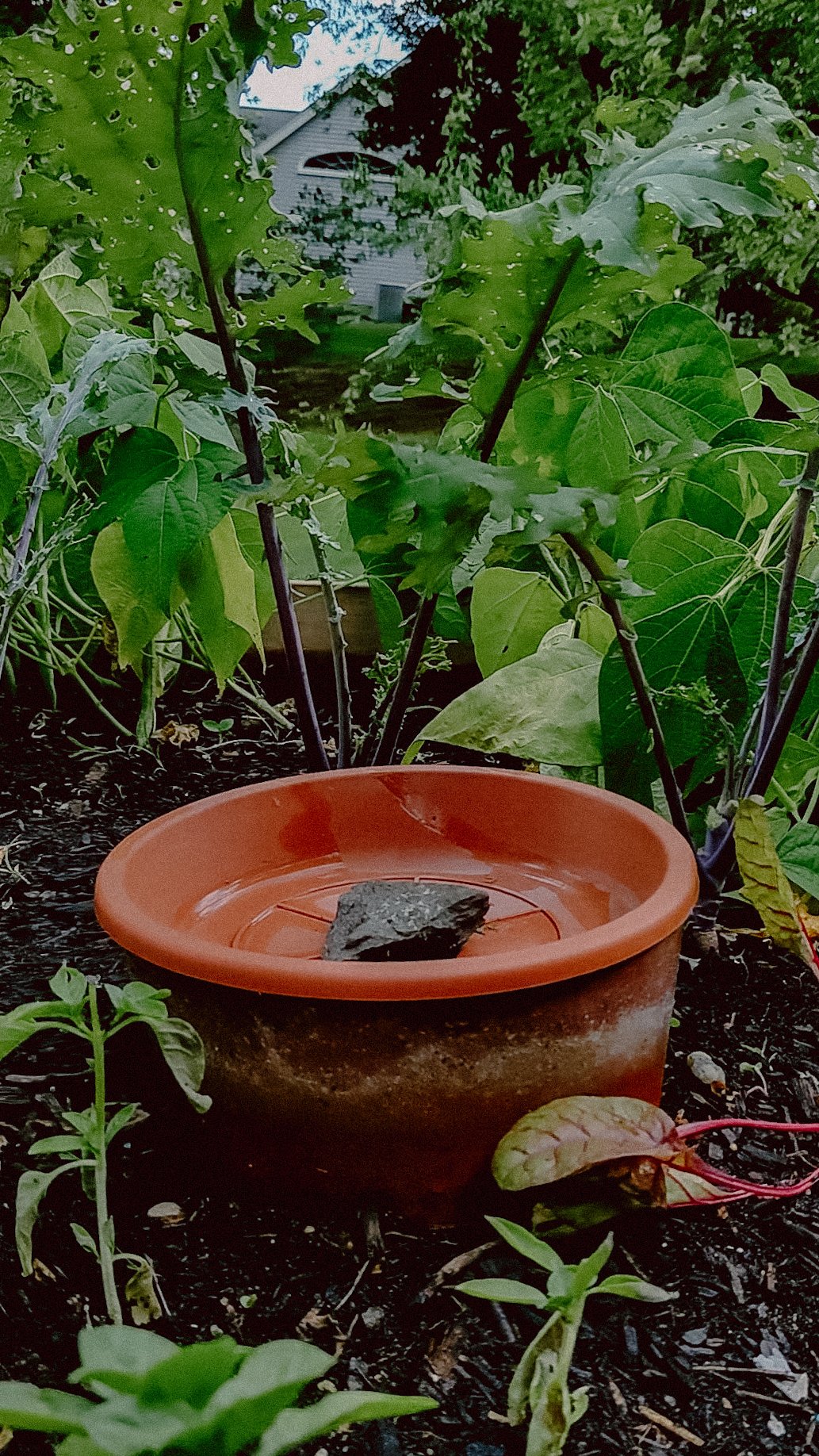Troubleshooting Olla Watering System Problems: Leaks, Clogs, and More
The Cottage Peach is reader-supported. When you purchase through links on our site, we may earn an affiliate commission at no additional cost to you. All opinions are our own.
Troubleshoot your DIY ollas with this guide!
Olla watering system leaking
If your olla pot is leaking, there could be a few causes. Start by examining the olla pot for any visible cracks or holes. These can occur due to manufacturing defects, accidental damage, or exposure to extreme temperatures. If the crack is small, it might be possible to seal it with a food-safe sealant. However, if the damage is extensive, the olla pot might need to be replaced. Olla pots are made from porous clay, which can allow water to seep through slowly. This is normal and not necessarily a leak. However, if the seepage is excessive, it could indicate that the pot is not made of true terracotta, causing watering to exit the pot too quickly through the side walls. If the olla pot has a drain hole that you've plugged, make sure it is properly sealed. An improperly sealed plug can allow water to leak out. Remove the olla from the garden, fill with water to look for leaks and check the seal for any damage or wear and tear. In rare cases, plant roots can grow into the olla pot and cause leaks. This is more likely to happen if the olla pot is buried too shallowly or if the plants are not properly spaced. If you suspect root intrusion, carefully remove the olla pot and check for any roots growing into it.
Olla watering system clogged
If the olla pot is buried in heavy clay soil or if the soil is not properly prepared before planting, soil and debris can clog the pores of the olla pot, preventing water from flowing out. This is more likely to happen in heavy clay soil. To prevent clogs, amend your soil with sand or coco coir. Over time, mineral deposits can build up inside the olla pot and cause clogs. This is more common in areas with hard water. To prevent mineral buildup, soak the olla pot in a solution of vinegar and water every few months. As mentioned earlier, plant roots can also grow into the olla pot and cause clogs. If you suspect root intrusion, carefully remove the olla pot and check for any roots growing into it.
Water isn't coming out of the olla watering system
If your olla isn't getting the soil damp within a two foot radius of the olla, it's most likely due to your olla not being made of true terracotta. This can happen with ollas made from "terracotta" purchased at big box stores, as they often use other types of clay dyed the same color as terracotta to cut costs. Other clay types may not work as well, because different clays have different levels of porosity.
If the olla pot is buried too deep or too shallow, it can take longer for the water to reach the roots of the plants or the olla may dry out. The olla watering system should be buried right up to the neck of the olla. If the soil around the olla pot becomes compacted, it can prevent water from flowing out. To prevent soil compaction, avoid walking on the soil around the olla pot and add a layer of mulch to help keep the soil loose. As mentioned earlier, clogged pores can also cause slow drainage. If you suspect clogged pores, try soaking the olla pot in a solution of vinegar and water.
Olla watering system is drying out too quickly
A lid will significantly reduce water evaporation, meaning you will need to refill your olla watering system less often. This is especially important in hot and dry climates. It will help keep insects, birds, and other pests out of your olla's water. This is important for maintaining water quality and preventing diseases. It's important to make sure the lid fits snugly on the olla watering system to prevent pests and debris from entering and if you're using a lid made from a lightweight material, make sure it is heavy enough to stay in place but not so heavy that it cracks the olla.
Bugs in olla watering system
Since some lid options have a lip on them, water can collect and stand inside of it. This water can grow algae and bacteria, as well as serve as a breeding ground for mosquitoes. But by adding small decorative stones or marbles to fill the space inside the lid, you can weigh the lid down as well as reduce the amount of water that's able to collect on the surface and even create a pollinator watering station since the rocks will provide resting spots for your local bees to stop and have a drink!
Regular maintenance can help prevent problems with your olla pots. Inspect your olla pots regularly for any signs of damage or wear and tear. Clean them every few months to prevent mineral buildup and clogs. Proper installation is essential for the effective operation of olla pots. Make sure your olla pots are buried at the correct depth and in well-draining soil. The frequency of refilling your olla pots will depend on your climate and the type of plants you are watering. In hot, dry climates, you may need to refill your olla pots more frequently.
WHAT IS AN OLLA WATERING SYSTEM?
Olla (pronounced oya) means “pot” in Spanish, but the concept of using ollas as an irrigation system goes back thousands of years and has been used in countless cultures around the world. An olla watering system is basically an unglazed eight to ten inch terracotta pot that is buried beneath the soil with only a small amount sticking up above the surface and filled with water. The water then leeches out of tiny holes or “pores” in the unglazed clay and is pulled through the soil to the roots of your thirsty plants using a process called soil moisture tension. This functions much the same way as osmosis, in that the water is trying to equalize to a certain level of moisture within the soil. This means your soil will never become overwatered either - if the soil is moist, the water stays in the pot until it is needed. The downsides of DIYing a system like this are that it can be hard to identify true terracotta - and other types of clays have different properties that make them not as well suited for this job. Plus, you have to fill each one manually every 2-5 days depending on how hot it is and most importantly they take up a lot of room in the garden beds. But thankfully, with the Thirsty Earth system all of those cons are eliminated.
WHY SHOULD YOU USE A Thirsty Earth OLLA WATERING System?
Hauling around a watering can and standing with a hose for 45 minutes isn't exactly a walk in the park for everyone, especially folks like me with arthritis. This past spring, I was right in the middle of a flare-up when I planted my garden. I knew I needed a way to water my plants without turning myself into a pretzel!
Imagine this: you water your plants, but most of the water just sits on top and bakes away in the sun. olla watering systems stop that waste! The water seeps out of the pot slowly, right where your plants need it most - at their roots. This fancy trick can slash your water use by up to 61%. Less water wasted means a lighter water bill and a happier planet.
Olla watering systems aren't just about saving water, they're also all about growing healthy plants! Since the water seeps out underground, plant roots stretch out searching for that moisture. This makes them stronger and helps your plants stand tall. Olla watering systems also keep the leaves of your plants dry, making it harder for fungus and disease to spread. And the slow release of water means your plants get the perfect amount to drink, never too much.
Basically, olla watering systems create happy, healthy plants that can take on anything. But, each olla can only cover an area of about 2 feet all around it (depending on the system you use, but this is true for the ThirstyEarth ollas). So depending on the size and shape of your garden, you'll need to keep this in mind when choosing your olla placement.
Thirsty Earth Olla Watering System Review
Since it can be hard to find genuine terracotta pots affordably in your area, and they take up a lot of space in the garden, the Thirsty Earth olla watering system can be a good compromise that allows you to actually hook up your ollas to an automatic rainwater harvesting system that will continuously refill your ollas for you on it’s own from free rainwater collected from your roof. Plus they are about the size of a water bottle, so they don’t waste precious planting space. I added the Thirsty Earth system to two of my raised beds, and since the system is super easy to customize to whatever garden bed configuration you have, you don’t have to worry about not having the right parts or enough pieces to get it done. The website does a great job of showing you exactly how to lay out the cotta cups and it’s made an already pretty hands-off system completely self-sustaining; water is collected from my roof into a 50 gallon barrel, flows automatically into reservoirs and down the irrigation tube into individual terracotta cups. Setup is easy thanks to the push to connect fittings that come with every kit. You just lay out your cups, cut the included tubing to size and connect everything with the fittings. No need to understand plumbing or any special building skills and you won't need any special tools either. Once everything is set up, you can leave it all summer and the reservoir will refill automatically from your rain barrel or you can manually refill it about once a week. I know it sounds too good to be true, but it really is that easy.
Other posts in this olla watering system series:
DIY OLLA WATERING SYSTEM INSTRUCTIONS
OLLA POTS FOR CONTAINER GARDENING
TROUBLESHOOTING OLLA POT PROBLEMS



